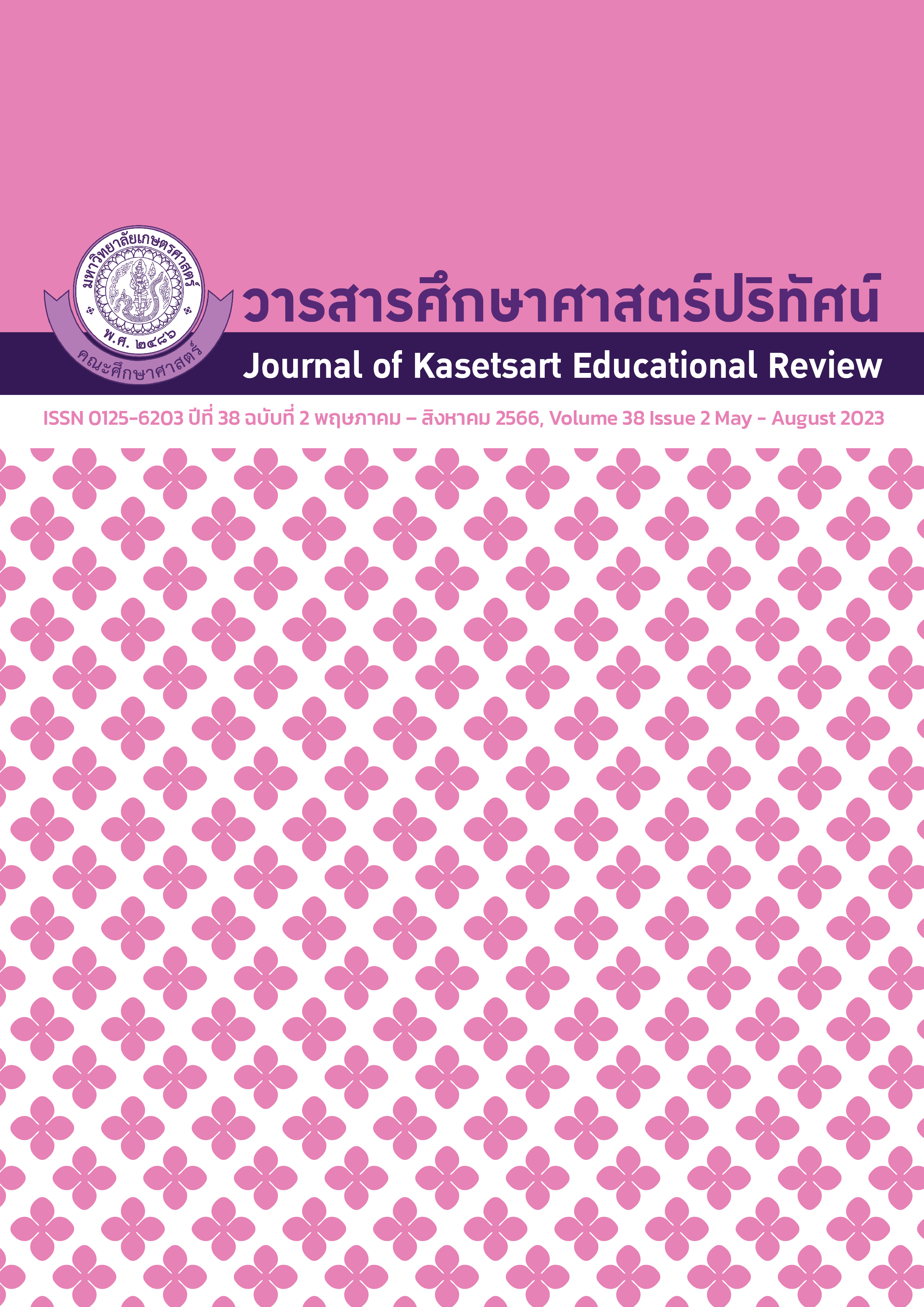การศึกษาแนวโน้มความต้องการเปิดสอนหลักสูตรวิทยาศาสตรบัณฑิต สาขาวิชานวัตกรรมและเทคโนโลยีทางการกีฬา สถาบันการพลศึกษา
คำสำคัญ:
แนวโน้มความต้องการ, นวัตกรรมและเทคโนโลยีทางการกีฬา, สาขาวิชาเทคโนโลยีทางการกีฬาบทคัดย่อ
การวิจัยนี้มีวัตถุประสงค์เพื่อศึกษาแนวโน้ม 1) ความต้องการของผู้เชี่ยวชาญต่อการเปิดจัดการเรียนรู้หลักสูตรวิทยาศาสตรบัณฑิต 2) ความต้องการของนักเรียนต่อหลักสูตรวิทยาศาสตรบัณฑิต และ 3) ความต้องการใช้บัณฑิตและคุณลักษณะเฉพาะของนักศึกษาหลักสูตรวิทยาศาสตรบัณฑิต กลุ่มเป้าหมายคือ ผู้เชี่ยวชาญด้านหลักสูตรและการสอนจากสถาบันการพลศึกษา จำนวน 59 คน นักเรียนมัธยมศึกษาปีที่ 6 จากเขตพื้นที่บริการสถาบันการพลศึกษา 17 วิทยาเขต จำนวน 384 คน และผู้ประกอบการด้านนวัตกรรมและเทคโนโลยีทางการกีฬา จำนวน 158 คน การเก็บรวบรวมข้อมูล เอกสารหลักสูตร การสัมภาษณ์กึ่งโครงสร้างผู้เชี่ยวชาญ เครื่องมือวิจัย ได้แก่ แบบสัมภาษณ์ผู้เชี่ยวชาญ แบบสอบถามนักเรียน และแบบสอบถามผู้ประกอบการ วิเคราะห์ข้อมูลจากกลุ่มตัวอย่างด้วย ค่าร้อยละ (Percent) ค่าเฉลี่ย () ค่าเบี่ยงเบนมาตรฐาน (S.D.) และวิเคราะห์เชิงเนื้อหา
ผลการวิจัยพบว่า แนวโน้มความต้องการของผู้เชี่ยวชาญต่อการเปิดหลักสูตรวิทยาศาสตรบัณฑิต จำนวน 59 คน มีความเห็นตรงกันต้องการให้เปิดจัดการเรียนรู้คิดเป็นร้อยละ 98.5 ด้านแนวโน้มความต้องการของนักเรียนต่อหลักสูตรวิทยาศาสตรบัณฑิต คิดเป็นร้อยละ 88.9 ความต้องการใช้บัณฑิตหลักสูตรวิทยาศาสตรบัณฑิต ค่าเฉลี่ยอยู่ในระดับมาก ( = 4.16, SD.=0.67) และคุณลักษณะเฉพาะของนักศึกษาประกอบด้วย ด้านคุณธรรม จริยธรรม ความรับผิดชอบ การตรงต่อเวลา มีความซื่อสัตย์สุจริต การประยุกต์ใช้เครื่องมือเพื่อพัฒนาการกีฬาและสมรรถภาพทางกาย การสร้างและพัฒนาเครื่องมือทางการกีฬาได้ และทำงานร่วมกับผู้อื่นได้เป็นอย่างดี
เอกสารอ้างอิง
Gray, J. R., Grove, S. K., & Sutherland, S. (2017). Burns and Grove's the Practice of Nursing Research: Appraisal, Synthesis, and Generation of Evidence. (8th ed.). ELSEVIER.
Krejcie, R.V., & D.W. Morgan. (1970). “Determining Sample Size for Research Activities”. Educational and Psychological Measurement. 30(3) : 607 – 610.
Ministry of Education. (2016). Education Development Plan of the Ministry of Education, No. 12 (2017-2021). Bangkok: Office of the Permanent Secretary, Ministry of Education. Ministry of Education. [in Thai]
Ministry of Industry. (2017). Thailand Industrial Development 4.0 Strategy for 20 years. (2017 - 2036). Royal Gazette. [in Thai]
Ministry of Tourism and Sports. (2013). Institute of Physical Education Strategy 2013-2017. [in Thai]
Ministry of Tourism and Sports. (2022). (Draft) National Sports Development Plan No. 7 (2023-2027). Ministry of Tourism and Sports. [in Thai]
Office of the Higher Education Commission. 2010. Manual for quality assurance with in Educational institutions. Higher Education 2010 (November 2010 issue). SEC. [in Thai]
Office of the National Economic and Social Development Council Office of the Prime Minister (2022). The 13th National Economic and Social Development Plan (2023-2027). Royal Gazette. [in Thai]
Office of the Higher Education Policy Council. (2021). Report on the development of Higher education, science, research and innovation of the country for the Year 2021. [in Thai]
Sports Authority of Thailand. (2022). National Sports Development Plan No. 7 (2022-2027). SVG Trade Organization Printing Press. [in Thai]
Taba, H. 1962. Curriculum Development Theory and Practice. New York: Harcourt, Brace and World.
Wongrattana, C. (2007). Statistics for research techniques (10th ed.). Thai Neramitkit Introgressive. [in Thai]
ดาวน์โหลด
เผยแพร่แล้ว
ฉบับ
ประเภทบทความ
สัญญาอนุญาต
ลิขสิทธิ์ (c) 2023 วารสารศึกษาศาสตร์ปริทัศน์

อนุญาตภายใต้เงื่อนไข Creative Commons Attribution-NonCommercial-NoDerivatives 4.0 International License.
บทความทุกบทความเป็นลิขสิทธิ์ของวารสารคณะศึกษาศาสตร์ มหาวิทยาลัยเกษตรศาสตร์ วิทยาเขตบางเขน
วารสารศึกษาศาสตร์ปริทัศน์ (Kasetsart Educational Review)






